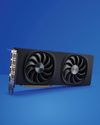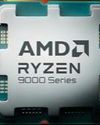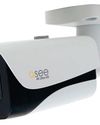試す 金 - 無料
A PARENT'S GUIDE TO PROGRAMMING
Maximum PC
|August 2021
Mike Bedford investigates which languages to consider if you want to help your children get a head start in coding
-

Let’s start with a history lesson. The first high-level languages—which made their debut in the 1950s and included the likes of FORTRAN, ALGOL, and COBOL—were designed as down-to-earth tools with little thought given to education. This changed in 1964 with the introduction of BASIC. The language’s acronym hints at its nature, and its full name, Beginners All-Purpose Symbolic Instruction Code, emphasizes its educational credentials. Indeed, BASIC was designed for use by students who had little appreciation of computers. It outlived other languages of that era, having been adopted for use in the home computers of the late ’70s and ’80s, and helped another generation learn to code.
While BASIC remained largely unchallenged for several decades, if you want to help your children learn to code today, it’s not nearly as easy to choose a language. For a start, there are now several other languages that were designed exclusively, or almost so, for education. Also, any discussion of beginners’ languages invariably brings up various languages which, although not originally intended for such, are considered to have a role in education.
このストーリーは、Maximum PC の August 2021 版からのものです。
Magzter GOLD を購読すると、厳選された何千ものプレミアム記事や、10,000 以上の雑誌や新聞にアクセスできます。
すでに購読者ですか? サインイン
Maximum PC からのその他のストーリー

Maximum PC
Velocity Micro Raptor ES40
A compact PC that mixes it with the big boys
3 mins
February 2025

Maximum PC
Intel Arc B580
Intel's second crack at the gaming GPU market
3 mins
February 2025

Maximum PC
Indiana Jones and the Great Circle
Dr Jones will steal your heart in MachineGames' best effort to date
2 mins
February 2025

Maximum PC
Improve your memory with Windows Recall
SINCE ITS ANNOUNCEMENT at Microsoft's Build conference in May 2024, Recall has had a torrid time.
11 mins
February 2025

Maximum PC
HAVE WE REACHED MAXIMUM PC?
Has the desktop reached the point where it can get no better? Ian Evenden looks ahead
17 mins
February 2025

Maximum PC
THE EVOLUTION OF VIDEO GAME AI
Over time, game AI has become more refined.
15 mins
February 2025

Maximum PC
X (formerly Twitter) vs Bluesky
The battle of the micro-bloggers
4 mins
February 2025

Maximum PC
Fun and graphics card games at CES 2025
WE ALL KNEW what was coming at CES: a bunch of graphics cards from AMD and Nvidia. They were pretty much exactly as predicted, albeit with some surprises. AMD managed to botch the launch of its RDNA 4 cards, while Nvidia played 3D chess with the pricing of its new RTX 50 cards.
2 mins
February 2025

Maximum PC
AMD UNVEILS NEW GAMING AND AI CHIPS
AMD Ryzen AI Max series announced at CES 2025
1 mins
February 2025

Maximum PC
DOCTOR
Save CCTV system | Multiple audio devices | Encrypted download
6 mins
February 2025
Translate
Change font size
